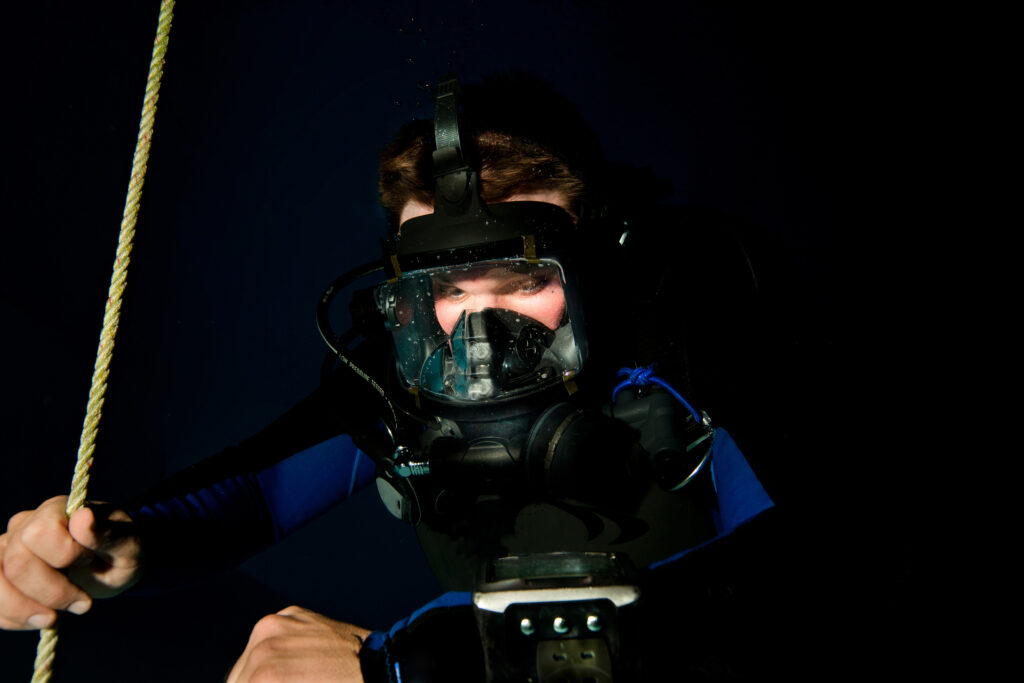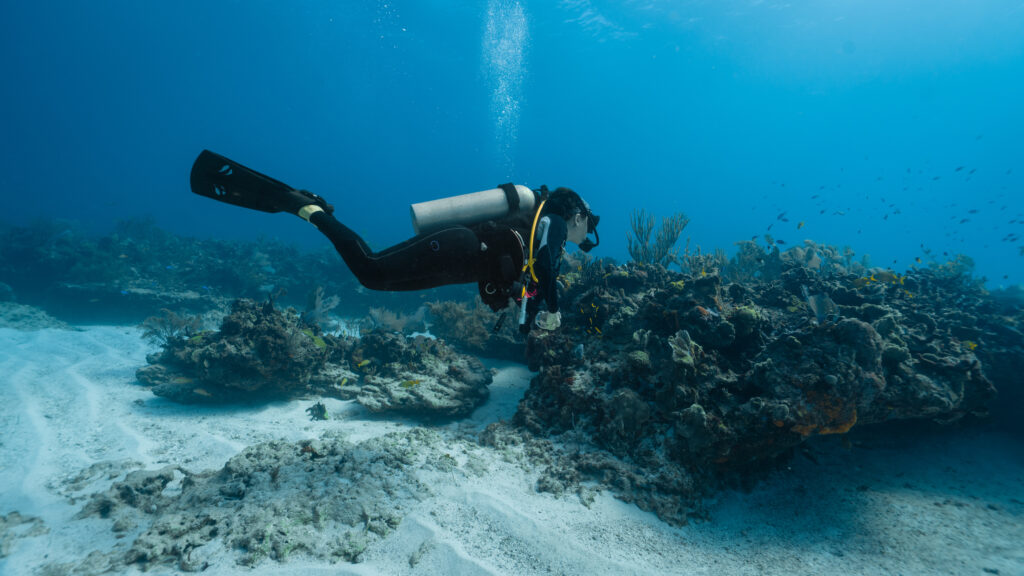What is Scuba Diving?

Scuba diving is a recreational and professional activity where individuals explore underwater environments using self-contained underwater breathing apparatus (SCUBA) equipment. This equipment allows divers to stay underwater for extended periods, enabling them to experience marine life, shipwrecks, caves, and other submerged wonders. The ability to explore these otherwise inaccessible areas has made scuba diving a popular pursuit for adventure enthusiasts, marine biologists, and professional divers alike. Since its modern development in the 20th century, scuba diving has attracted millions of people globally, offering a unique blend of excitement, discovery, and tranquility beneath the waves.
What is a Faceplate?

A faceplate is a critical component in a scuba diver’s gear, providing visibility and protection while underwater. This essential piece of equipment, found on both full face masks and helmets, is typically made of glass or plastic materials.
What is an ABC set in scuba diving, freediving, and snorkeling?

The ABC Set is an acronym representing the essential scuba diving, freediving and snorkeling gear that every diver needs: A – scuba mask, B – snorkel, and C – scuba fins. These three foundational pieces of equipment provide the necessary underwater vision, airway, and propulsion mechanisms, respectively, to safely and efficiently explore the underwater world.
What is really air when scuba diving?

Lorem ipsum dolor sit amet, consectetur adipiscing elit. Praesent vitae metus odio. Nam pellentesque turpis at vehicula vulputate. Etiam digsim consectetur nibh, nec suscipit quam interdum vitae.
What is a Automatic Diluent Valve (ADV)?

The Automatic Diluent Valve (ADV) is a critical component in the configuration of modern rebreather systems used in scuba diving. This device automatically adds diluent gas to the breathing loop to maintain the correct volume and optimal gas mixture, ensuring the diver’s buoyancy and safety at varying depths. The importance of the ADV in facilitating longer, safer dives cannot be overstated, making it an essential study for divers and technicians alike.
What is Water Pressure when Diving?

Water pressure is a crucial concept in scuba diving, defined as the force per unit area exerted by the weight of water. The weight of the water column above a certain depth creates this pressure. This pressure is not just from the top down, but it is exerted equally from all directions. The deeper a diver descends, the greater the water pressure exerted on their body.
What is a Forward Roll Entry?

The forward roll entry, a staple technique for scuba divers, is a safe and efficient way of entering the water from a boat or a pier. As a key skill for divers of all levels, it is essential to master this technique for both safety and comfort. This entry will discuss the benefits of using the forward roll entry, the steps to execute it correctly, and potential hazards and tips to avoid them.
What is the Frenzel Maneuver?

The Frenzel Maneuver is a specialized technique used primarily in scuba diving and freediving to equalize pressure in the middle ear. Named after the German Luftwaffe commander Hermann Frenzel who developed it during World War II, this maneuver has become a crucial skill for divers. Proper equalization prevents discomfort and potential damage to the ear caused by changes in pressure during descents and ascents in water. The Frenzel Maneuver involves closing the vocal cords and using the tongue to compress air into the Eustachian tubes, allowing for more effective pressure regulation compared to other methods.
What is Narcosis?

Narcosis, often referred to as “the rapture of the deep,” is a condition that affects scuba divers when they descend to certain depths underwater. It is a state of altered consciousness caused by the pressure of breathing gases at depth. Understanding narcosis is crucial for divers to ensure their safety and well-being while underwater. This condition can impact a diver’s mental and physical capabilities, leading to potentially dangerous situations if not recognized and managed properly. As such, it is a topic of significant importance in the field of scuba diving, both for recreational and professional divers.
What is Open Circuit Scuba?

Open circuit scuba diving is a method of underwater diving in which the diver breathes from a tank of compressed gas and exhales directly into the water. This system is contrasted with closed-circuit systems, where exhaled gas is recycled and re-breathed. Open circuit scuba is the most common and widely used system in both recreational and professional diving. It is valued for its simplicity, reliability, and the extensive training programs available to certify divers. The ease of use and availability of open circuit scuba equipment have made it a cornerstone of underwater exploration.
